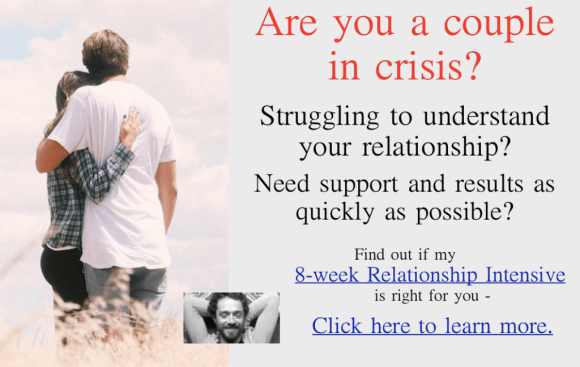The end of a relationship or marriage can feel like death. Grief is an appropriate response. This means anger, sadness, denial might all arise. It’s visceral. Breathing is hard. You can’t sleep. For the person being left it can feel like the end of the world. You wonder if you’ll even survive. To say you’re hurt and confused or angry is too little. It feels much bigger, like everything has been turned upside down and shaken, like the ground has disappeared under your feet.
Along with negotiating urgent practical matters like finances, housing and parenting, you might also come face to face with abandonment, rejection and self-esteem issues, some of which may have been dormant and are arising for the first time.
This is a very, very tender spot to find yourself. It’s immensely uncomfortable. In my work as a counsellor I notice patterns and common tendencies in my clients. I’ve also identified opportunities and choice-points for moving forward in a healthy way. Here are five principles that can help –
1. Feel what you feel Feelings aren’t negotiable. They can’t be wrong. They simply are. It’s important to feel what you feel. When we deny uncomfortable emotions they come back to haunt us, or they drive our behaviour from underneath consciousness, without our active consent. Rule of thumb – there’s no need to either encourage or deny feelings. Notice them, name them (“I feel sad”) and watch them change over time. Note – Anger is a feeling. Fear is a feeling. Sadness is a feeling. “S/He’s a control freak” isn’t a feeling. (More on that in a future article.)
2. Take thoughtful action We don’t necessarily choose our feelings, although we choose how we act on them. As much as noticing our feelings is important, it would be a mistake to act on them without consulting our rational, thinking self. The trouble is, when strong feelings are present we don’t have much access to the part of our brain that makes well-considered choices. Take some time. Let feelings settle before you make important decisions around child custody, financial agreements or emails to the in-laws. Breathe.
3. Get support, but not from your (ex)partner The person who is leaving the relationship is almost certainly not the person to help you cope with the pain you feel. You might feel extremely needy or drawn to this person right now. Do not give in to the urge to seek comfort there, especially if it is not offered. If you are holding out hope for reconciliation, say so, but then get support elsewhere. Seeing you pick yourself up, brush yourself off and take support from others is the most attractive thing about you right now in your (ex)partner’s eyes. Turn to friends, family and community for support. Tell them what helps, and what doesn’t. Find a counsellor or therapist that you trust.
4. Stay open, even when it hurts When we feel hurt and angry we look for an explanation. We want to understand. We assume we shouldn’t feel this way, that it’s a big problem. And so we search for a reason. The reason we find is almost always some version of I’m bad or They’re bad or The world is bad. What these three positions all offer is a way out of the confusion. Assigning cause (blame) does relieve some tension. The problem is that each of these three beliefs locks us into an adversarial relationship – with self, with other, or with reality (the world). I’m not saying that your relationship ending wasn’t caused by you or them or the unfairness of the world. But getting too fixated on any of those causes makes you rigid and closed to possibilities that might be just around the corner.
5. Help others This piece of advice was given to me by a friend over a decade ago when a relationship was ending and I was in deep pain. His simple and wise words led me to the act of writing this for you now. Helping others gets us out of our own head and puts us in direct contact with the universal experience of suffering. Everybody hurts. Help someone. Share their pain, and feel your own soften.
Like what you’re reading here? You’ll love my book. Read the first 10 pages free.
Trying to grow, fix, change, understand or save your marriage? I provide couples therapy, marriage counselling, coaching and mentoring to individuals and couples on the issues that make or break relationships – Sessions by telephone/skype worldwide. Email justice@justiceschanfarber.com to request a client info package. www.JusticeSchanfarber.com
Sign up to get my articles by email –
Help others – share this article using the buttons below.










